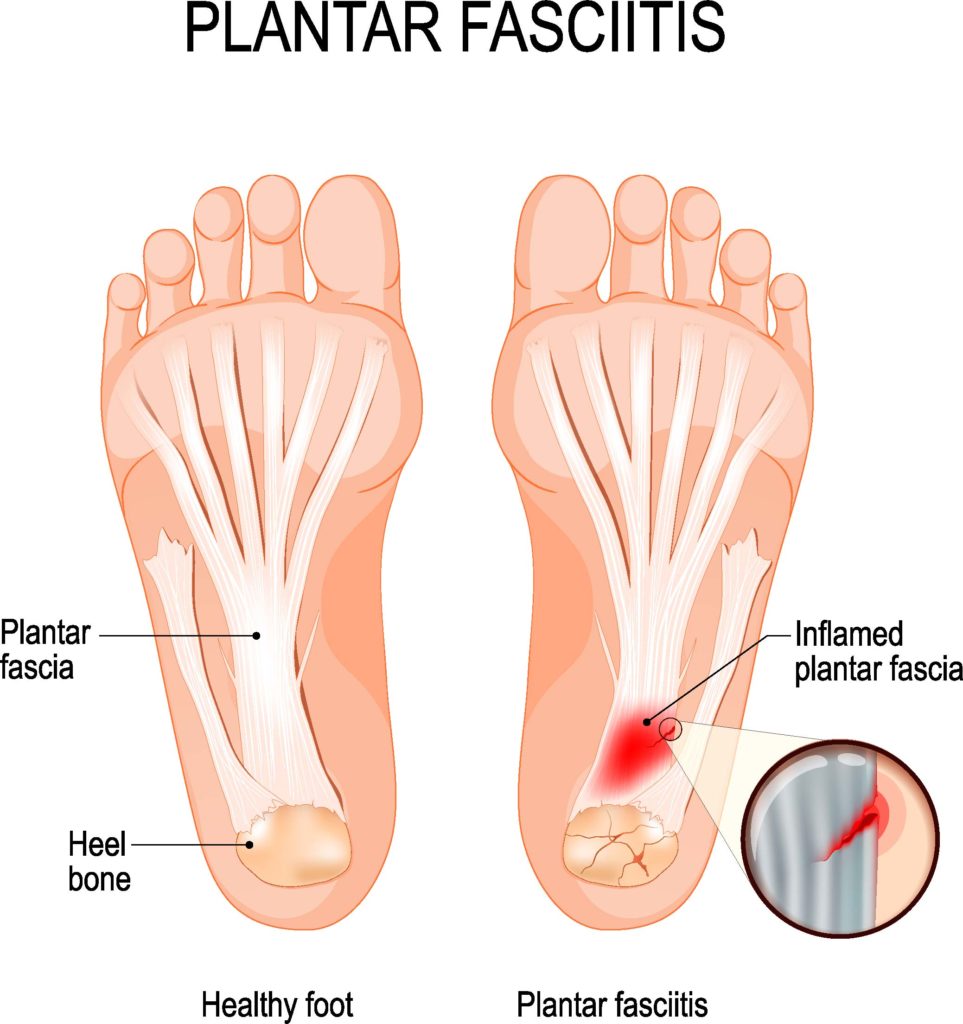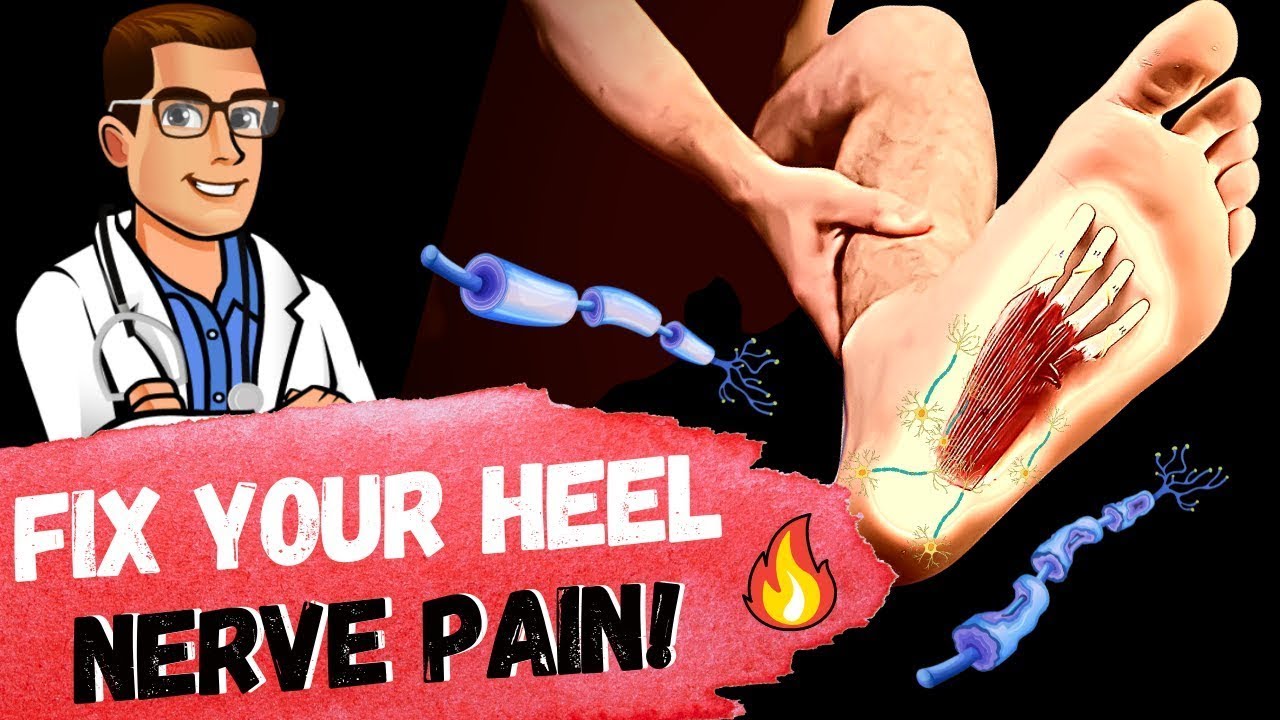Fast Track Your Recovery: Cure Plantar Fasciitis in Just One Week
Discover evidence-based methods and product recommendations to alleviate plantar fasciitis quickly and effectively.
Table of Contents
Introduction
- Plantar fasciitis, a common cause of heel pain, affects millions of people worldwide.
- If you’re one of them, you’re probably looking for a quick and effective solution.
- In this article, we explore how to cure plantar fasciitis in just one week.
- While individual results may vary, these evidence-based strategies and product recommendations have garnered positive reviews and have been proven to help many find relief.

RICE Therapy
The first line of treatment for plantar fasciitis is the RICE method: Rest, Ice, Compression, and Elevation. A 2014 study in the Journal of Athletic Training showed that applying RICE therapy to acute soft tissue injuries helped to reduce pain, inflammation, and recovery time (1).
Recommendation: The NatraCure Cold Therapy Sock is an effective tool for icing and compressing the affected area. With a 4.5-star rating on Amazon, users report reduced pain and swelling when used consistently (2).
Stretching Exercises
Stretching exercises have been shown to alleviate plantar fasciitis symptoms. A 2011 study published in the Journal of Physical Therapy Science concluded that calf and plantar fascia-specific stretches improved pain and function in patients with plantar fasciitis (3).
Recommendation: The ProStretch Plus Adjustable Calf Stretcher is a highly-rated device that allows you to perform targeted stretches. With a 4.6-star rating on Amazon, users report improved flexibility and decreased heel pain (4).
Orthotics and Insoles
Orthotics and insoles can provide additional support and alleviate pressure on the plantar fascia. A 2019 study in the Journal of Foot and Ankle Research found that participants experienced a significant decrease in pain after using custom-made foot orthoses for six weeks (5).
Recommendation: Superfeet Green Insoles are a popular choice, with a 4.5-star rating on Amazon. Users report increased arch support and reduced heel pain (6).
Massage and Myofascial Release
Massage and myofascial release can help to break down scar tissue and increase blood flow to the plantar fascia. A 2018 study in the Journal of Bodywork and Movement Therapies showed that a combination of deep tissue massage and self-stretching exercises improved pain and function in plantar fasciitis patients (7).
Recommendation: The TriggerPoint GRID Foam Roller is a top-rated product for self-massage and myofascial release. With a 4.7-star rating on Amazon, users praise its durability and effectiveness in relieving tightness and pain (8).
Night Splints
Wearing a night splint can help to maintain a gentle stretch on the plantar fascia while you sleep. A 2012 study in the Journal of Foot and Ankle Surgery found that night splints significantly improved morning pain for plantar fasciitis patients (9).
Recommendation: The Aircast Dorsal Night Splint is a popular choice, with a 4.1-star rating on Amazon. Users report increased comfort and decreased morning pain when used consistently (10).
Best Plantar Fasciitis Inserts:
- Orthotics are an effective solution for many individuals suffering from plantar fasciitis.
- They provide additional support, help redistribute pressure on the feet, and can alleviate pain.
- Several studies have highlighted the benefits of using orthotics for plantar fasciitis.
- Here, we will explore some of the best orthotics available and the research supporting their use.
Custom-made Orthotics & Inserts::
A study published in the Journal of Foot and Ankle Research (2019) found that custom-made foot orthoses significantly decreased pain in patients with plantar fasciitis after six weeks of use . Custom-made orthotics are designed specifically for an individual’s foot, providing tailored support and accommodating unique foot structures.
While custom orthotics are often more expensive than over-the-counter options, many users find them to be worth the investment due to the personalized fit and support they provide.
Over-the-counter Inserts:
- Over-the-counter (OTC) orthotics are an affordable and accessible alternative to custom-made orthotics.
- Although they are not tailored to the individual’s foot, many OTC orthotics have been found to be effective in alleviating plantar fasciitis symptoms.
- Some of the best over-the-counter orthotics for plantar fasciitis include:
a. Superfeet Green Inserts:
- Superfeet Green Insoles are a popular choice for plantar fasciitis sufferers. They provide high-density foam for support and comfort and a deep heel cup that helps to stabilize the foot. Users with a 4.5-star rating on Amazon report increased arch support and reduced heel pain.
b. Powerstep Pinnacle Shoe Inserts:
- Powerstep Pinnacle Shoe Insoles are another highly-rated option for plantar fasciitis relief. These insoles offer support and cushioning, with semi-rigid arch support and dual-layer cushioning. According to a 4.5-star rating on Amazon, users report improved comfort and reduced foot pain.
c. SOLE Active Medium Inserts:
- SOLE Active Medium Insoles are designed for everyday use and support plantar fasciitis sufferers. These insoles feature a heat-moldable base that can be customized for a better fit. With a 4.3-star rating on Amazon, users praise the insoles for their arch support and durability.
Heel cups and inserts:
- Heel cups and inserts can provide additional cushioning and support for individuals with plantar fasciitis.
- A 2017 study published in the Journal of Physical Therapy Science demonstrated that silicone heel cups, alongside a home exercise program, significantly reduced pain in patients with plantar fasciitis.
Some popular heel cups and inserts include:
- Tuli’s Heavy Duty Heel Cups: With a 4.3-star rating on Amazon, these heel cups are designed to provide shock absorption and cushioning, reducing the impact on the heel.
- Heel That Pain Plantar Fasciitis Insoles: These inserts have a 4.3-star rating on Amazon and feature patented Fascia-Bar technology, which claims to redistribute pressure away from the plantar fascia.
- It is essential to consult with a healthcare professional or podiatrist before choosing orthotics for plantar fasciitis to ensure the best fit and support for your individual needs.
While individual results may vary, custom-made and over-the-counter orthotics have been proven to relieve plantar fasciitis sufferers. Consult with a healthcare professional or podiatrist to determine the best orthotic option.
